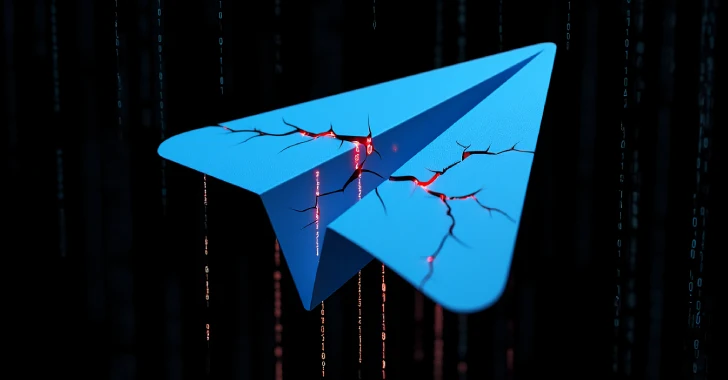In a series of sophisticated cyberattacks, the threat group known as ShadowSilk has targeted 36 government entities across Central Asia and the Asia-Pacific (APAC) region. These incursions, primarily aimed at data exfiltration, have been meticulously analyzed by cybersecurity firm Group-IB, revealing a complex and evolving threat landscape.
Victimology and Geographical Spread
The attacks have predominantly affected government organizations in Uzbekistan, Kyrgyzstan, Myanmar, Tajikistan, Pakistan, and Turkmenistan. Beyond the public sector, entities within the energy, manufacturing, retail, and transportation industries have also been compromised. This broad targeting underscores ShadowSilk’s expansive operational reach and strategic intent to infiltrate critical sectors.
Operational Dynamics and Linguistic Insights
Group-IB’s research indicates that ShadowSilk operates through a bilingual team comprising Russian-speaking developers and Chinese-speaking operators. The Russian-speaking faction is linked to legacy code associated with YoroTrooper, while the Chinese-speaking operatives are believed to spearhead the intrusions. This collaboration results in a nimble, multi-regional threat profile, though the exact nature of their cooperation remains uncertain.
Evolutionary Trajectory and Historical Context
ShadowSilk’s activities are part of a broader evolution of cyber threats in the region. The group shares toolsets and infrastructural overlaps with previously identified threat actors such as YoroTrooper, SturgeonPhisher, and Silent Lynx. YoroTrooper, first documented by Cisco Talos in March 2023, targeted government, energy, and international organizations across Europe since at least June 2022. Further analyses suggest that YoroTrooper has been active since 2021, with indications that its members may originate from Kazakhstan, given their fluency in Kazakh and Russian.
In January 2025, Seqrite Labs uncovered cyberattacks by an adversary dubbed Silent Lynx, targeting organizations in Kyrgyzstan and Turkmenistan. This actor exhibited overlaps with YoroTrooper, suggesting a continuum in the threat landscape leading to the emergence of ShadowSilk.
Attack Methodology and Technical Arsenal
ShadowSilk employs spear-phishing emails as the initial access vector, delivering password-protected archives that contain custom loaders. These loaders obfuscate command-and-control (C2) traffic by utilizing Telegram bots, thereby evading detection mechanisms. Persistence is achieved by modifying the Windows Registry to ensure the malicious payloads execute automatically upon system reboot.
The group also exploits known vulnerabilities in web platforms, including Drupal (CVE-2018-7600 and CVE-2018-7602) and the WP-Automatic WordPress plugin (CVE-2024-27956). Their toolkit is diverse, encompassing reconnaissance and penetration-testing tools such as FOFA, Fscan, Gobuster, Dirsearch, Metasploit, and Cobalt Strike.
Additionally, ShadowSilk has integrated JRAT and Morf Project web panels, acquired from darknet forums, for managing infected devices. They have developed bespoke tools to steal Chrome password storage files and associated decryption keys. A notable tactic involves compromising legitimate websites to host malicious payloads, further enhancing their stealth capabilities.
Post-Exploitation Tactics and Data Exfiltration
Once inside a network, ShadowSilk deploys web shells like ANTSWORD, Behinder, Godzilla, and FinalShell. They utilize Sharp-based post-exploitation tools and tunneling utilities such as Resocks and Chisel to facilitate lateral movement, privilege escalation, and data exfiltration.
The attacks often culminate in the deployment of a Python-based remote access trojan (RAT) capable of receiving commands and exfiltrating data to a Telegram bot. This method disguises malicious traffic as legitimate messenger activity, complicating detection efforts. Furthermore, Cobalt Strike and Metasploit modules are employed to capture screenshots and webcam images, while custom PowerShell scripts scan for files matching predefined criteria, ensuring comprehensive data harvesting.
Implications and Defensive Measures
The emergence of ShadowSilk underscores the evolving complexity of cyber threats targeting government entities and critical infrastructure. The group’s sophisticated tactics, including the use of legitimate communication platforms like Telegram for C2 operations, highlight the need for enhanced vigilance and adaptive defense strategies.
Organizations are advised to implement robust email filtering to mitigate spear-phishing attempts, regularly update and patch software to address known vulnerabilities, and conduct comprehensive security audits to identify and remediate potential weaknesses. User education on recognizing phishing attempts and the importance of cybersecurity hygiene is also crucial in building a resilient defense posture.
In conclusion, ShadowSilk’s activities represent a significant threat to governmental and critical infrastructure sectors in Central Asia and the APAC region. A concerted effort combining technological defenses, user education, and international collaboration is essential to counteract such sophisticated cyber adversaries.



